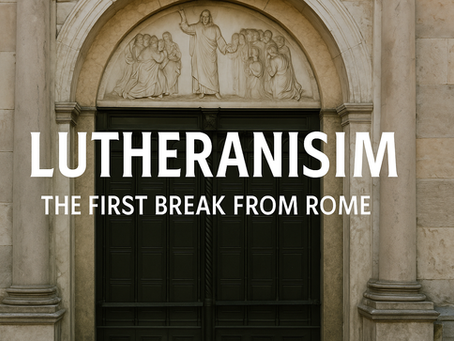top of page


Quakers: The Inner Light, Silence, and Doctrinal Drift
Quakers: The Inner Light, Silence, and Doctrinal Drift. The Religious Society of Friends—better known as Quakers—emerged in 17th-century England as a radical challenge to established churches. Rejecting clergy, sacraments, and outward rituals, they emphasized the “Inner Light,” a direct experience of God available to every believer. Their legacy includes social activism, pacifism, and simplicity of life. Yet while their sincerity is notable, their theology often drifts far fr
3 min read


Anabaptists: Separation, Simplicity, and Sectarianism
Anabaptists: Separation, Simplicity, and Sectarianism. The Anabaptist movement, born in the turbulent years of the 16th-century Reformation, sought to return to a “pure” New Testament faith. Rejecting infant baptism, state churches, and coercion, they became the “radicals” of the Reformation, insisting on believer’s baptism, separation from the world, and a life of visible discipleship.
3 min read


Lutheranism: The First Break from Rome and Its Lasting Legacy
Lutheranism: The First Break from Rome and Its Lasting Legacy. Lutheranism is often celebrated as the first branch of Protestantism, when Martin Luther nailed his Ninety-Five Theses to the church door at Wittenberg. His protest against indulgences, papal abuses, and corrupt theology sparked the Reformation. Yet while Luther recovered the biblical doctrine of justification by faith, Lutheranism still carried forward many Catholic structures and introduced new fractures into th
3 min read


Protestantism: Reformation, Fracture, and the Modern Crisis
Protestantism: Reformation, Fracture, and the Modern Crisis. Many Protestants resist being called a “denomination.” They claim Protestantism is not one denomination, but rather a “movement” or simply “Christianity.” Yet in practice, it functions exactly like a denomination — an umbrella identity that covers Lutherans, Reformed, Anglicans, Baptists, Methodists, Pentecostals, Charismatics, and Non-denominationals.
4 min read


Eastern Orthodoxy: Tradition, Icons, and Division
Eastern Orthodoxy: Tradition, Icons, and Division. The Eastern Orthodox Church presents itself as the purest and most faithful expression of the “One Holy Catholic and Apostolic Church.” It claims to preserve the unbroken tradition of the apostles. But just like Roman Catholicism, Orthodoxy is not the one true faith. While Orthodoxy preserves valuable aspects of early Christianity, it also layers human traditions, Byzantine culture, and iconography onto the gospel.
5 min read


What Does It Mean to Be Non-Denominational?
What Does It Mean to Be Non-Denominational?. The term “non-denominational” gets thrown around a lot these days. You’ll find it on church signs, websites, and social media bios—often paired with phrases like “Bible-based,” “Spirit-filled,” or “come as you are.” But what does “non-denominational” actually mean?
6 min read


Church History
Understanding church history matters because it helps us see where our traditions come from and why so many sincere Christians have ended up divided. It teaches us to be humble about our own assumptions and to focus on what is essential.
7 min read
bottom of page